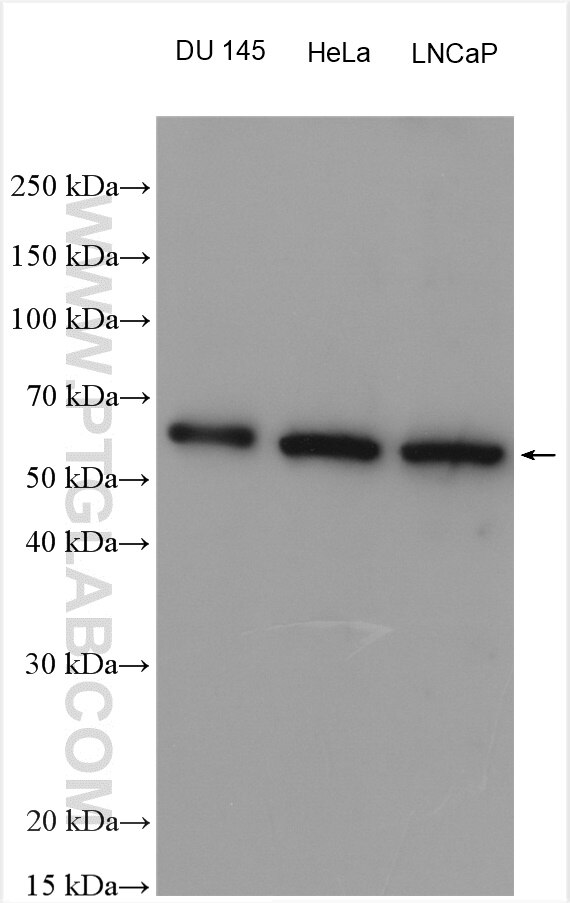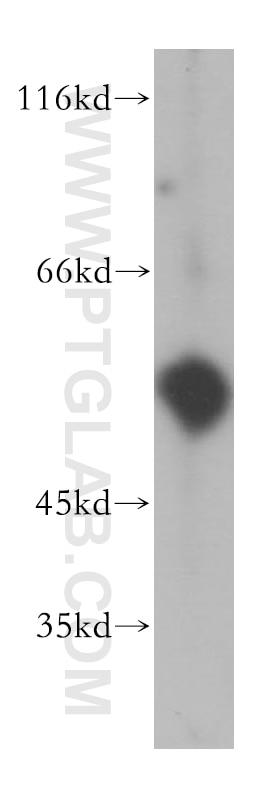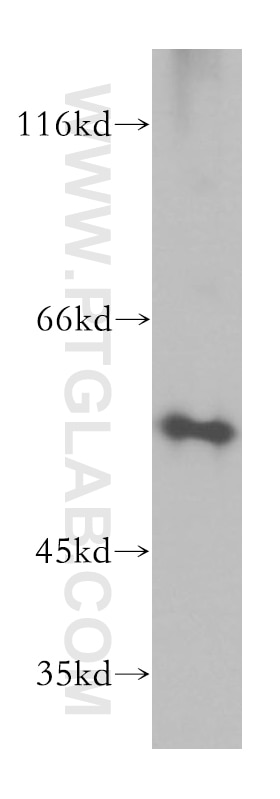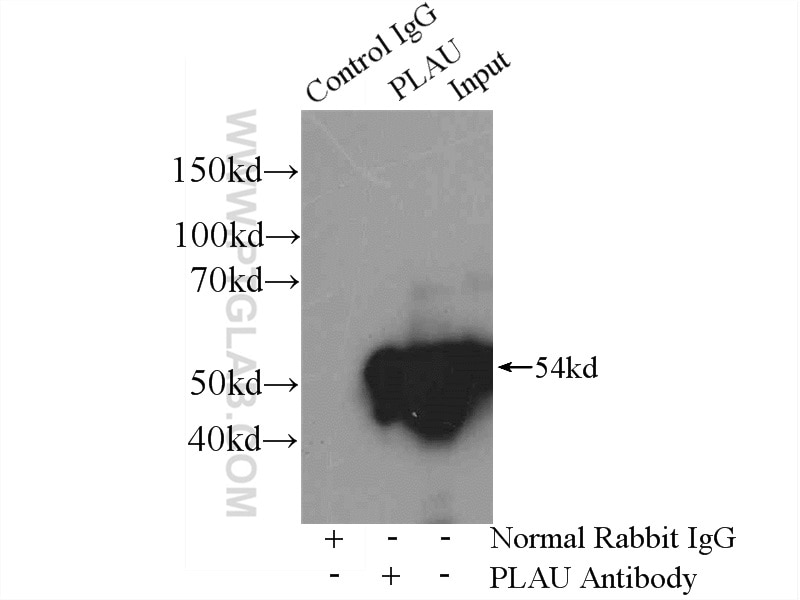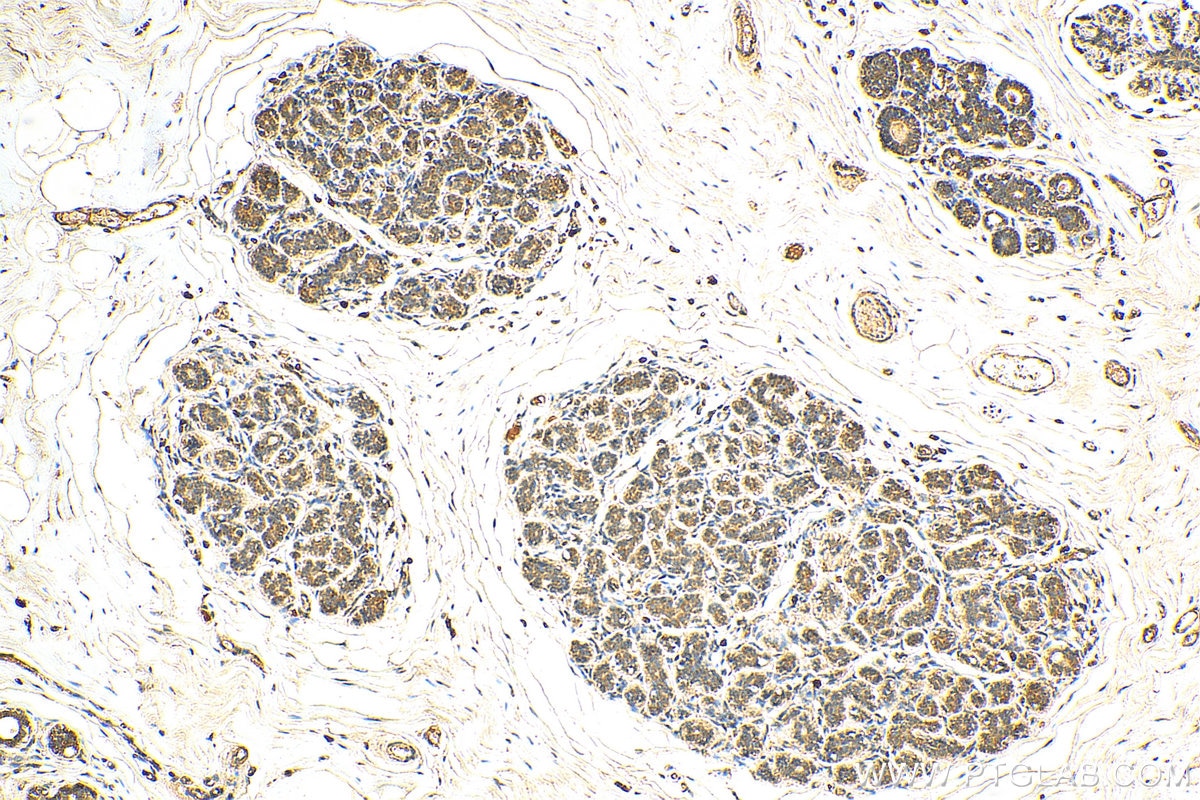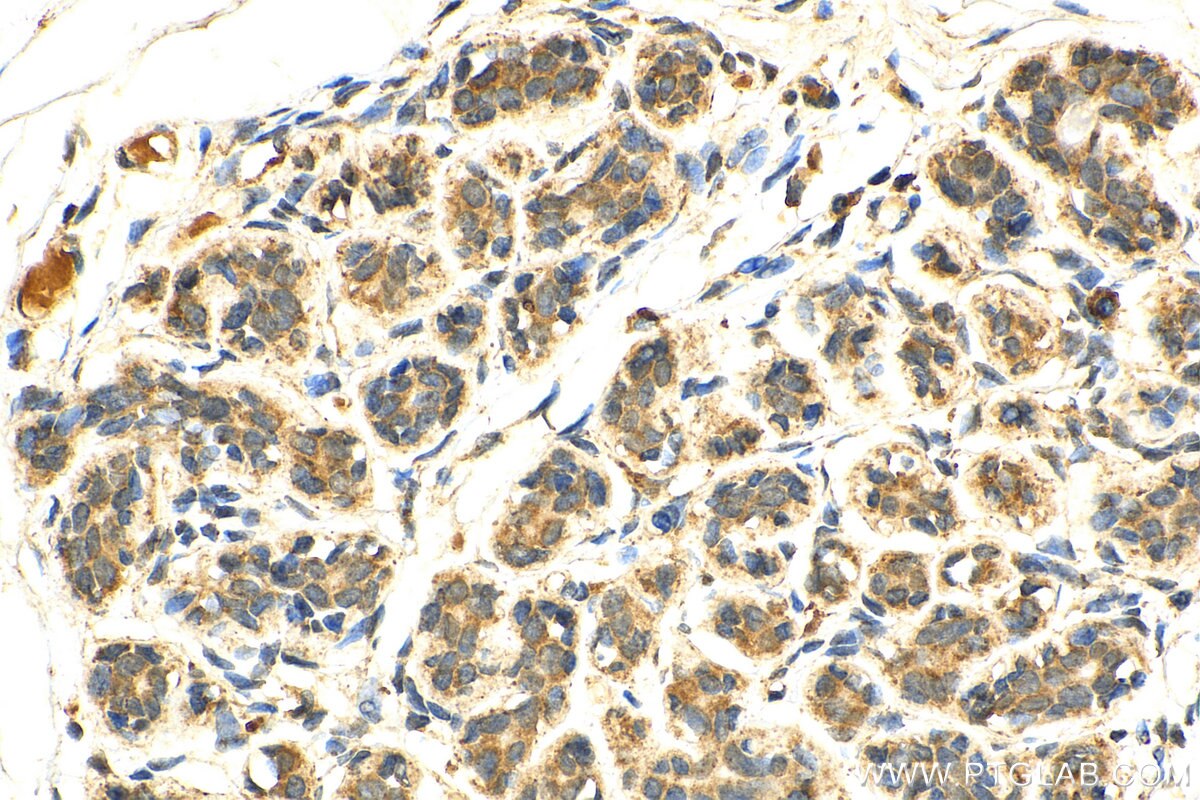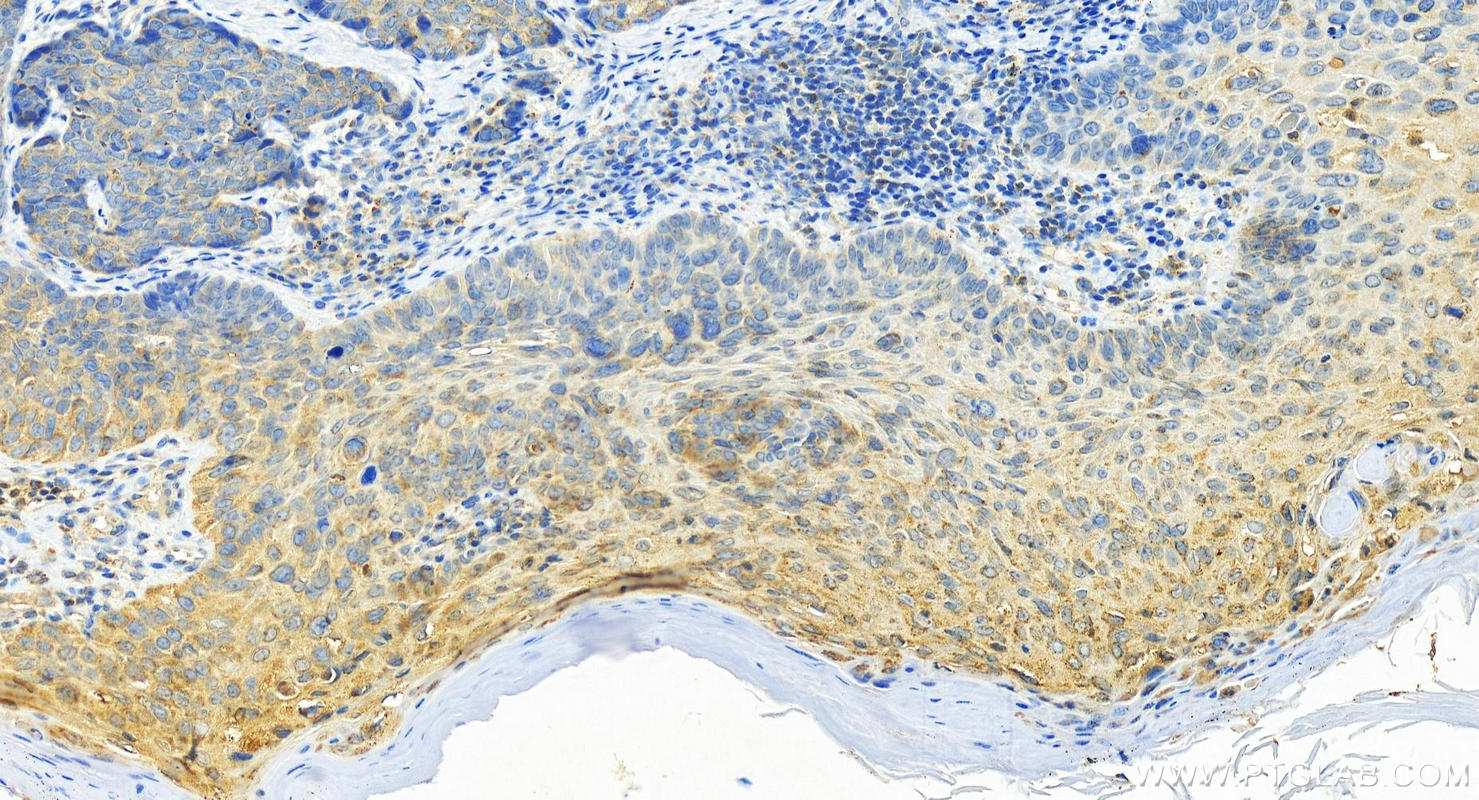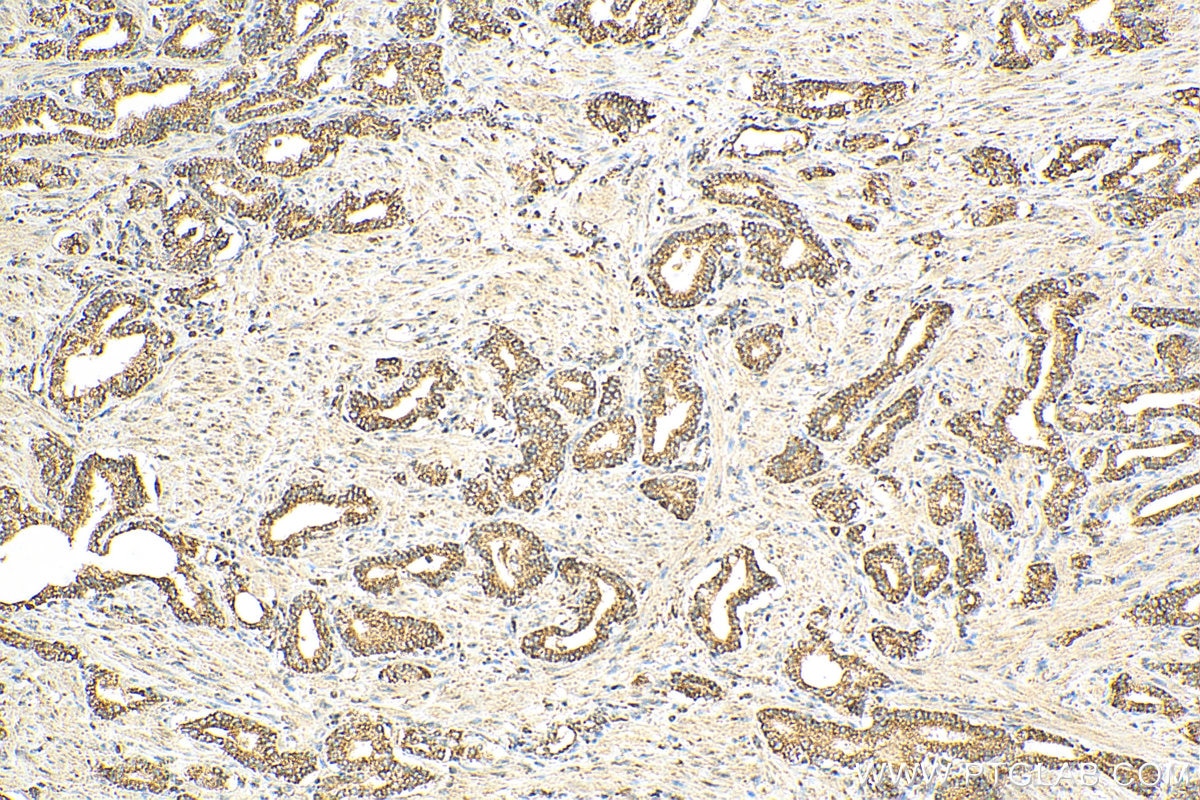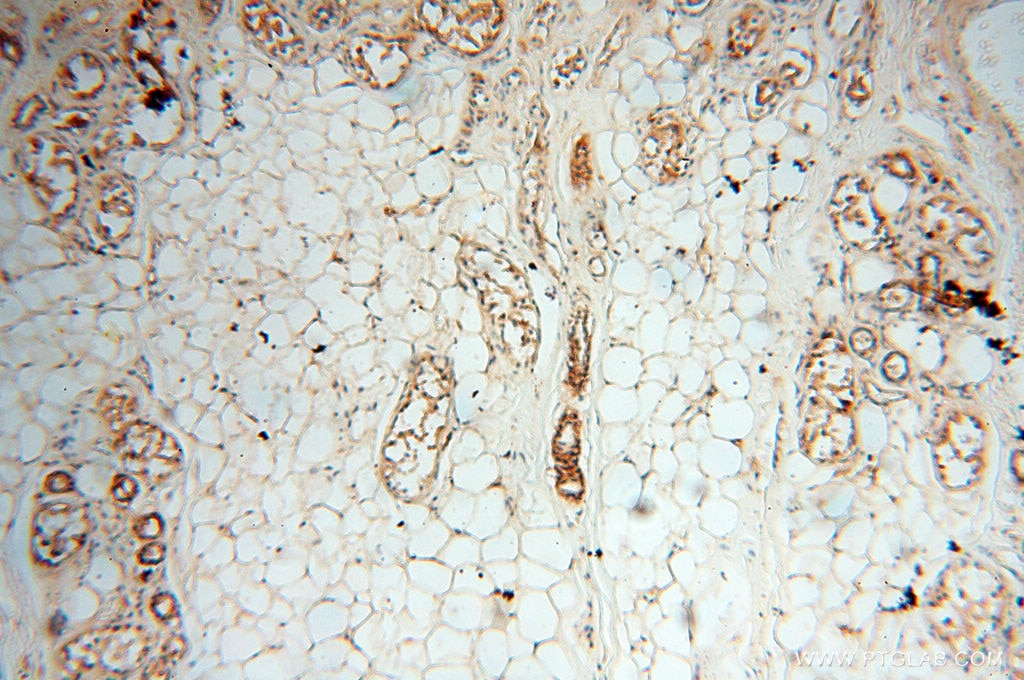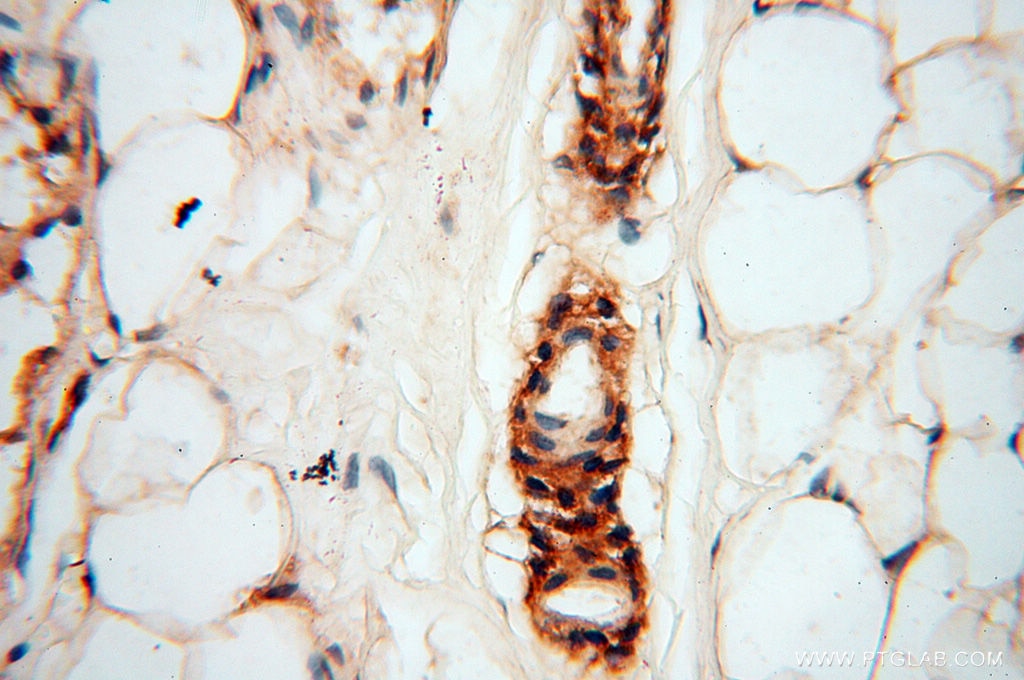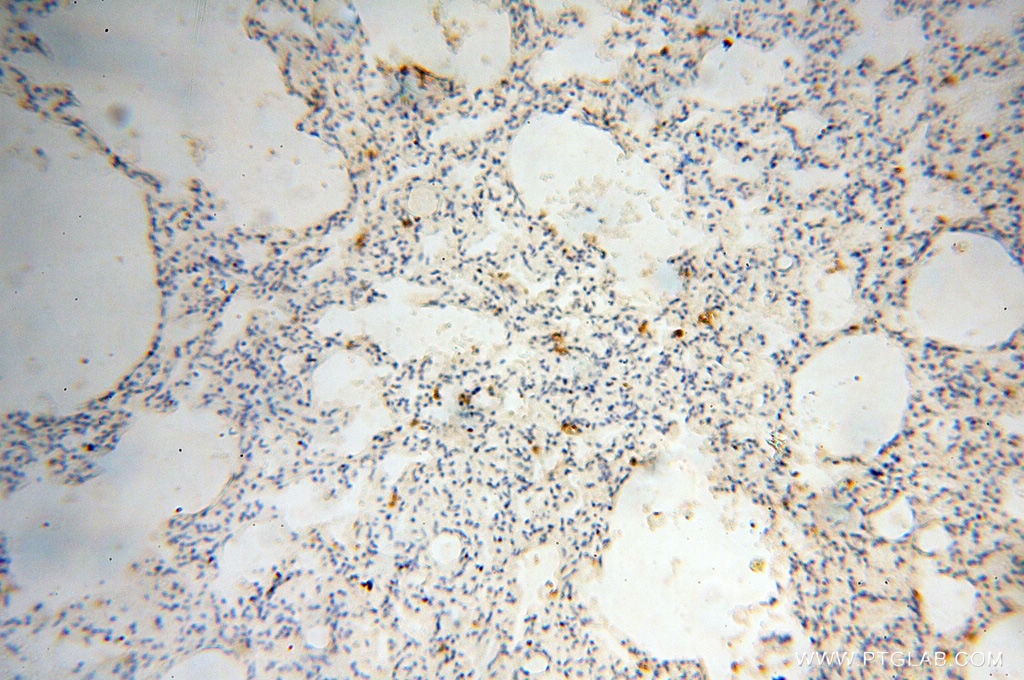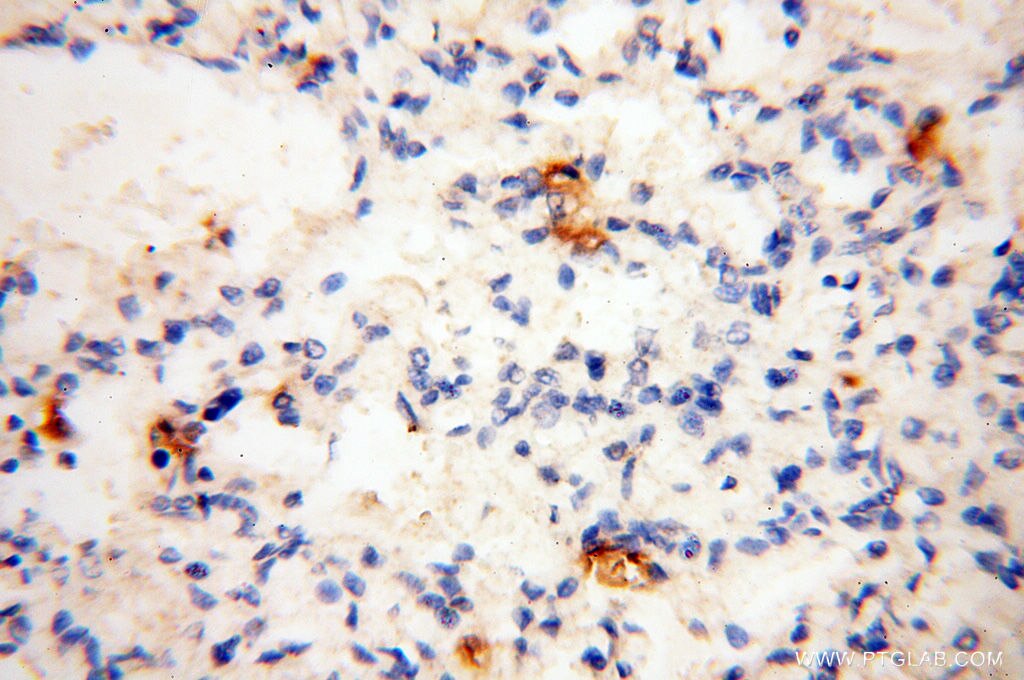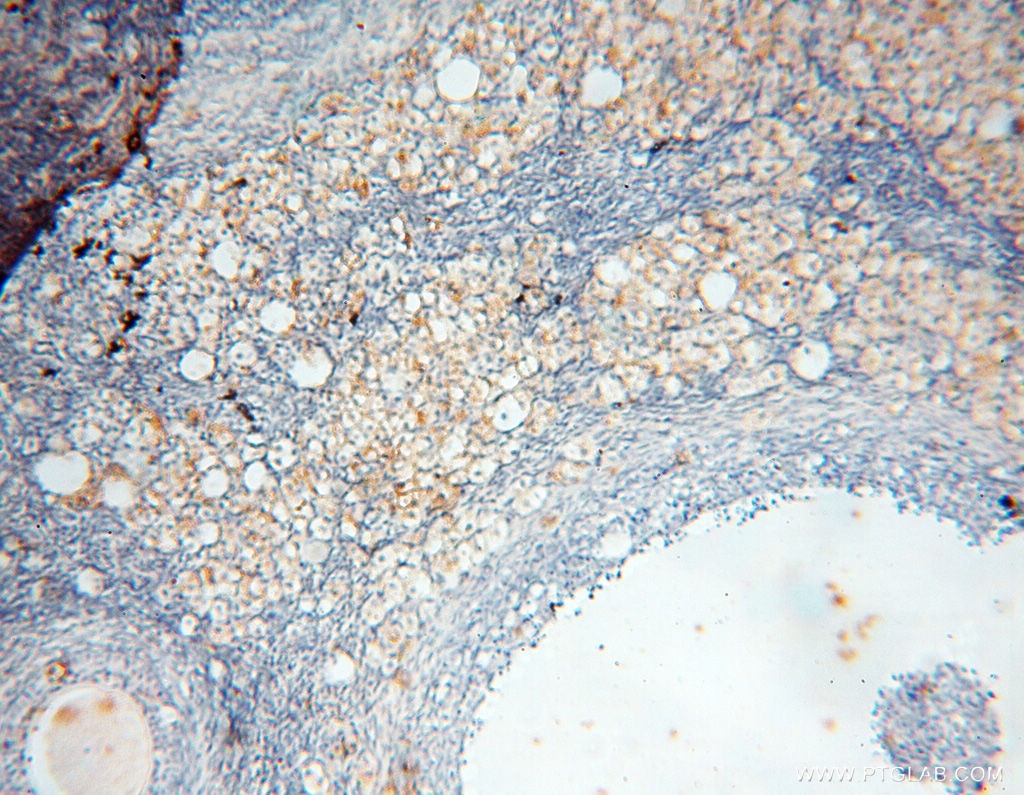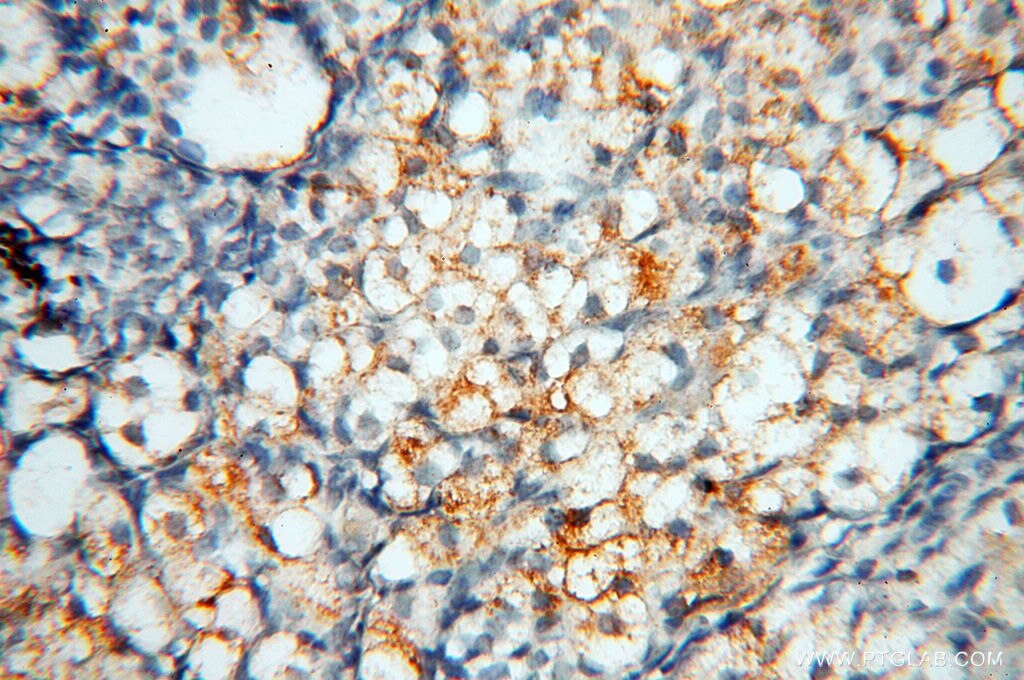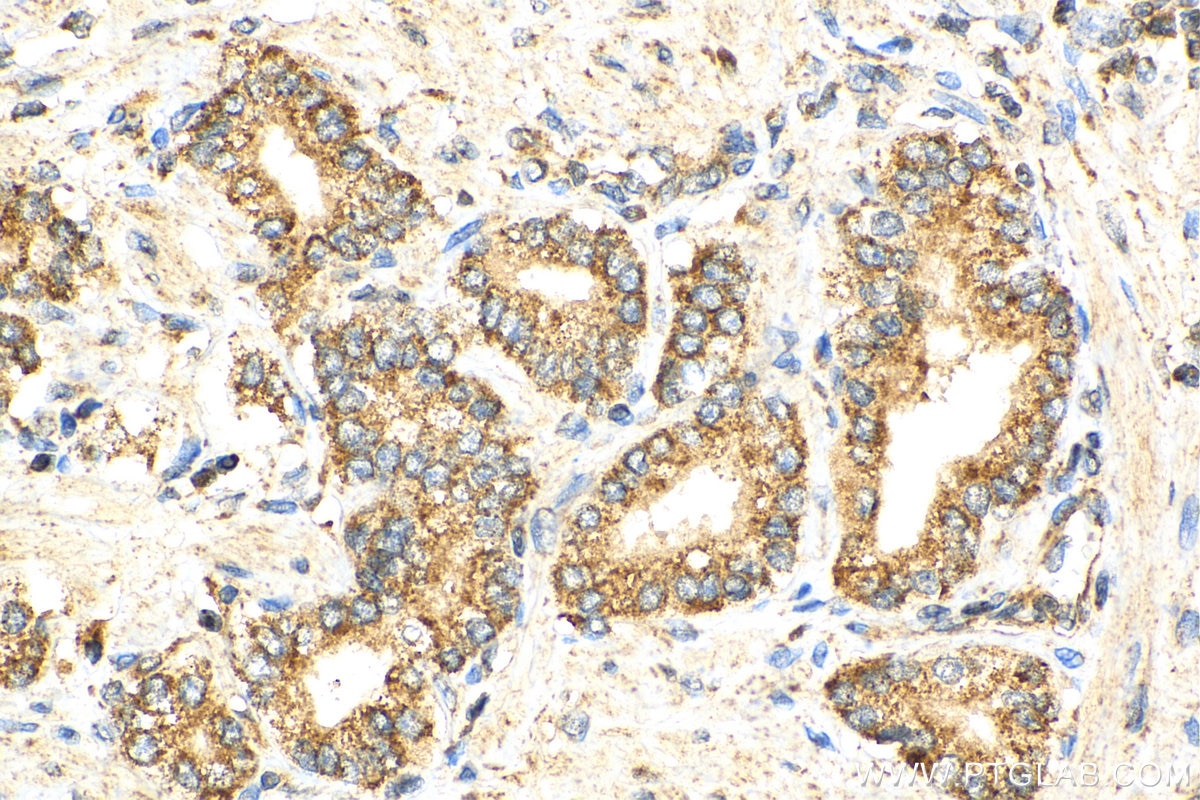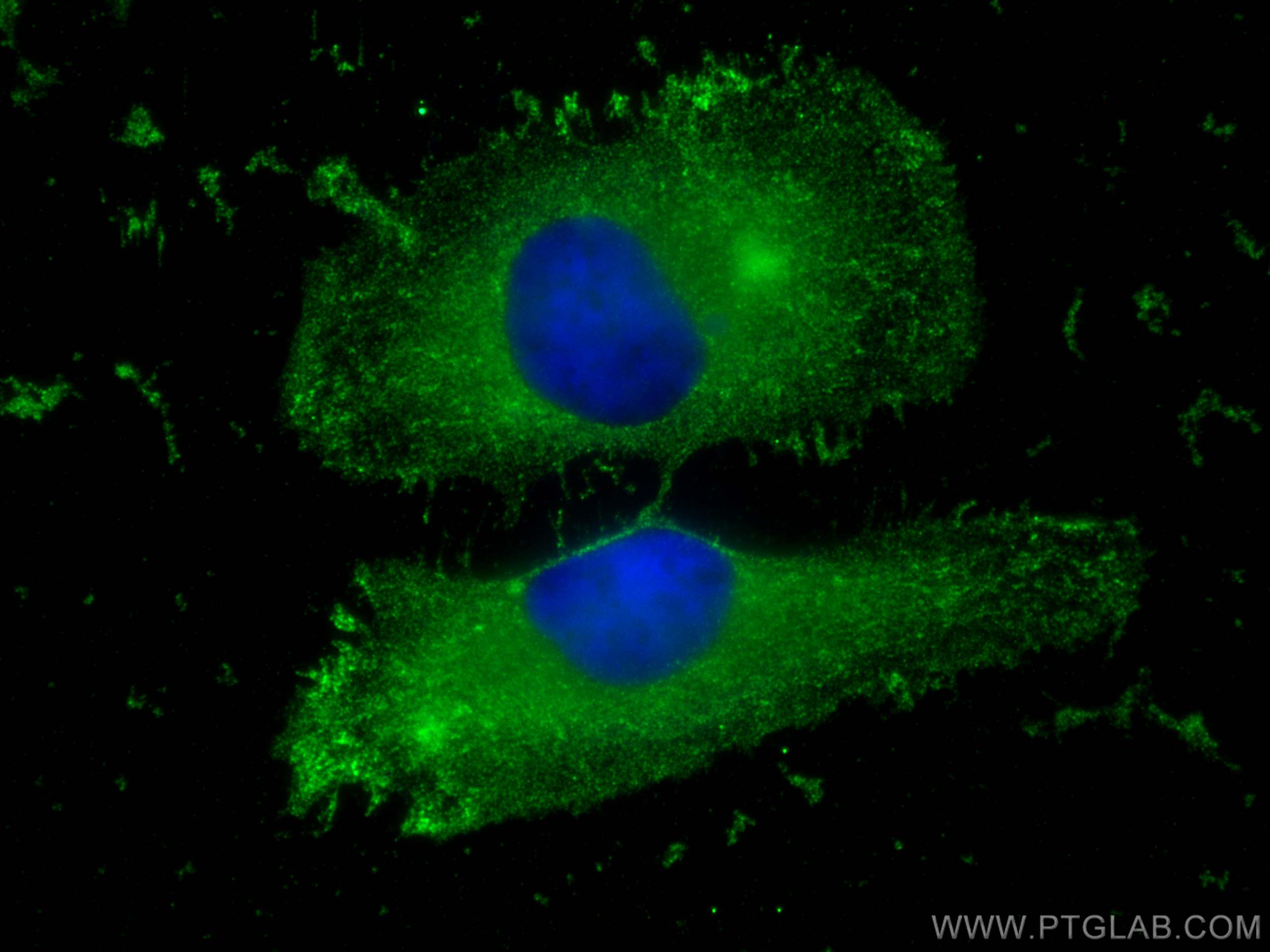Validation Data Gallery
Tested Applications
| Positive WB detected in | DU 145 cells, human brain tissue, A375 cells, Hela cells, LNCaP cells |
| Positive IP detected in | HeLa cells |
| Positive IHC detected in | human breast cancer tissue, human bowen disease, human lung tissue, human ovary tissue, human prostate cancer tissue, human skin tissue Note: suggested antigen retrieval with TE buffer pH 9.0; (*) Alternatively, antigen retrieval may be performed with citrate buffer pH 6.0 |
| Positive IF/ICC detected in | HeLa cells |
Recommended dilution
| Application | Dilution |
|---|---|
| Western Blot (WB) | WB : 1:1000-1:8000 |
| Immunoprecipitation (IP) | IP : 0.5-4.0 ug for 1.0-3.0 mg of total protein lysate |
| Immunohistochemistry (IHC) | IHC : 1:50-1:500 |
| Immunofluorescence (IF)/ICC | IF/ICC : 1:200-1:800 |
| It is recommended that this reagent should be titrated in each testing system to obtain optimal results. | |
| Sample-dependent, Check data in validation data gallery. | |
Published Applications
| KD/KO | See 1 publications below |
| WB | See 38 publications below |
| IHC | See 12 publications below |
| IF | See 7 publications below |
| IP | See 1 publications below |
| CoIP | See 1 publications below |
Product Information
17968-1-AP targets uPA/Urokinase in WB, IHC, IF/ICC, IP, CoIP, ELISA applications and shows reactivity with human, mouse, rat samples.
| Tested Reactivity | human, mouse, rat |
| Cited Reactivity | human, mouse, rat, bovine |
| Host / Isotype | Rabbit / IgG |
| Class | Polyclonal |
| Type | Antibody |
| Immunogen |
CatNo: Ag11813 Product name: Recombinant human uPA protein Source: e coli.-derived, PGEX-4T Tag: GST Domain: 82-431 aa of BC013575 Sequence: ASTDTMGRPCLPWNSATVLQQTYHAHRSDALQLGLGKHNYCRNPDNRRRPWCYVQVGLKPLVQECMVHDCADGKKPSSPPEELKFQCGQKTLRPRFKIIGGEFTTIENQPWFAAIYRRHRGGSVTYVCGGSLISPCWVISATHCFIDYPKKEDYIVYLGRSRLNSNTQGEMKFEVENLILHKDYSADTLAHHNDIALLKIRSKEGRCAQPSRTIQTICLPSMYNDPQFGTSCEITGFGKENSTDYLYPEQLKMTVVKLISHRECQQPHYYGSEVTTKMLCAADPQWKTDSCQGDSGGPLVCSLQGRMTLTGIVSWGRGCALKDKPGVYTRVSHFLPWIRSHTKEENGLAL 相同性解析による交差性が予測される生物種 |
| Full Name | plasminogen activator, urokinase |
| Calculated molecular weight | 431 aa, 49 kDa |
| Observed molecular weight | 54 kDa |
| GenBank accession number | BC013575 |
| Gene Symbol | Urokinase |
| Gene ID (NCBI) | 5328 |
| RRID | AB_2165202 |
| Conjugate | Unconjugated |
| Form | |
| Form | Liquid |
| Purification Method | Antigen affinity purification |
| UNIPROT ID | P00749 |
| Storage Buffer | PBS with 0.02% sodium azide and 50% glycerol{{ptg:BufferTemp}}7.3 |
| Storage Conditions | Store at -20°C. Stable for one year after shipment. Aliquoting is unnecessary for -20oC storage. |
Background Information
PLAU(Urokinase-type plasminogen activator) is also named as uPA and belongs to the peptidase S1 family.UPA initiates a proteolytic cascade, which degrades extracellular matrix during tissue growth and remodelling.The secreted proform of UPA is activated after binding to a specific high affinity cell surface receptor. Secreted UPA is exposed to rapid inactivation in the pericellular space by plasminogen activator inhibitor-1 (PAI-1), which is stored in the extracellular matrix bound to vitronectin(PMID:9665342).It has 2 isoforms produced by alternative splicing. Defects in PLAU are the cause of Quebec platelet disorder (QPD).
Protocols
| Product Specific Protocols | |
|---|---|
| IF protocol for uPA/Urokinase antibody 17968-1-AP | Download protocol |
| IHC protocol for uPA/Urokinase antibody 17968-1-AP | Download protocol |
| IP protocol for uPA/Urokinase antibody 17968-1-AP | Download protocol |
| WB protocol for uPA/Urokinase antibody 17968-1-AP | Download protocol |
| Standard Protocols | |
|---|---|
| Click here to view our Standard Protocols |
Publications
| Species | Application | Title |
|---|---|---|
Gastroenterology Inhibition of Plasmin Protects Against Colitis in Mice by Suppressing Matrix Metalloproteinase 9-mediated Cytokine Release From Myeloid Cells. | ||
J Exp Med PDGF-D activation by macrophage-derived uPA promotes AngII-induced cardiac remodeling in obese mice. | ||
Aging (Albany NY) Tertiary lymphoid structure stratifies glioma into three distinct tumor subtypes. | ||
Aging (Albany NY) NFAT5 directs hyperosmotic stress-induced fibrin deposition and macrophage infiltration via PAI-1 in endothelium. |

